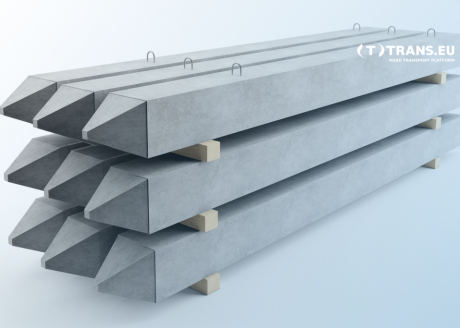Heavy and bulky goods
Objects which are very different from the standard dimensions of parcels, packages or goods are heavy and bulky goods. These types of items cannot be transported in a closed road vehicle or container. However, the transport of heavy goods is regulated by the Customs Convention on the International Carriage of Goods, or TIR Convention, drawn up in Geneva in 1975. Its purpose was to facilitate the international carriage of goods by road vehicle, especially at borders. Heavy goods usually exceed the permissible axle loads, have considerable material value, and require detailed knowledge on how to transport them.
Division of oversize loads
There is a classification of oversize loads that allows goods to be ordered according to their weight and dimensions. Below is a detailed explanation of each type of heavy and bulky goods:
- ordinary heavy goods - they go beyond standard truck sets, their weight does not exceed 25 tons. In this case, the dimensions of these cargoes are slightly larger than the permissible standards, so by definition, they are called ordinary. They are about 15 meters long and 4 meters wide, and their height is 3 meters. These types of goods are transported on regular road sets, however, they must be properly marked. What exactly do normal heavy goods look like? They include industrial machinery, steel constructions, etc,
- long products are another group of heavy goods transport that should be distinguished. For this type of cargo, the length reaches and often even exceeds 40-50 meters! However, it is worth noting that the other dimensions, i.e. width and height do not deviate from the norm. What are long goods? First of all, these are elements of wind power plants or installations for refineries, however, parts of bridges can also be mentioned here,
- large-size cargo is the last but one group of goods. Here the weight does not have to exceed the assumed norms, however, the dimensions, often on all planes, do. Most often these goods are up to 5 metres long, 7 metres high and their maximum width is 7 metres. They are often steel constructions or tanks, often also parts of mining equipment,
- heavy goods - this time something that in the context of the definition given at the beginning is the most important for us, i.e. heavy cargo. Here, both road and rail transport is used to effectively transport loads from this group, as they can weigh from 70 to 100 tonnes. What are they? Ship parts (hatch covers), railroad wagons, or huge machines for the construction, demolition, and mining industries.
Concentrated and bulky heavy loads
Concentrated heavy weights include the notching shafts of ship engines or industrial presses. Transformers, generators, and turbines are also often referred to in this way. A characteristic feature of concentrated heavy loads is their high weight in relation to volume. Interestingly, this type of heavy goods can weigh up to 200-300 tonnes! Multi-axle semi-trailers or railroad wagons are used to transport them.
Bulky goods include bridge spans, cranes, petrochemical raw materials, harbor cranes, and drilling rigs. These types of goods are numerous and can only be transported by sea or river. This is all because the maximum weight of these bulky goods reaches up to 900 tons, where the height often reaches 40 meters.
Heavy goods in rail and sea transport
Railway transport is used when heavy goods exceed the maximum permissible axle load for land transport. Special wagons are used for this and the transport is carried out under all kinds of extraordinary conditions. The weight, size, and shape of the goods are taken into account.
Transport of heavy goods by sea is carried out when the weight of the cargo exceeds several hundred tons, but often it is even several thousand. Dimensions are also taken into account, as we wrote above. Specialized pontoons or ships are used to transport this type of cargo.
